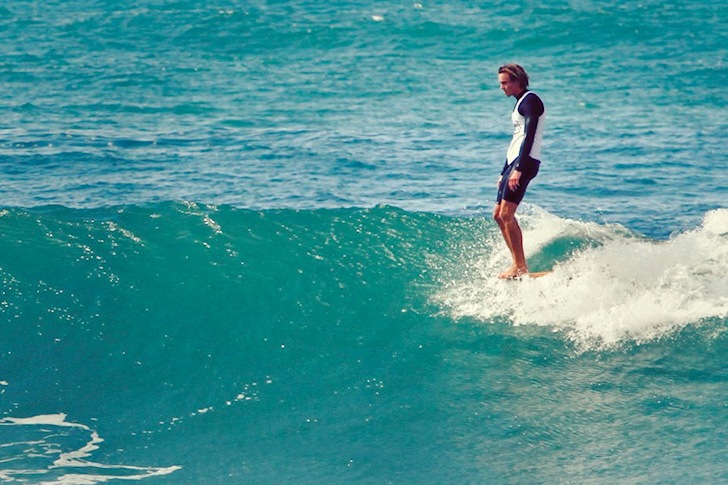Is longboarding a sport itself? Is riding single fin boards a different art? Could longboarding also be called surfing? Why do longboarders tend to ride away from the contemporary surfing world?
Today, when we think about longboarding, we often blend two different worlds: ultra-competitive log riding with complex and heavy maneuvers and ultra-retro, traditional longboard activities, in which style rules the line-up.
On the one hand, the professional approach is delivered by the World Surf League (WSL) and the International Surfing Association (ISA). Compete, improve, win.
The competitive rules for longboarders have board requirements. They say that the length should be at least 9 feet, measured from the nose to the tail on the surfboard's deck.
Traditional Malibu models with multiple fins and channels are allowed, too.
Commitment, degree of difficulty, variety of traditional and modern maneuvers, use of footwork on the board, speed, power, style, and flow, and combination of major maneuvers.
That's what it takes to crown a longboard champion.
On the other side of the log club, meet the new traditionalists - those trying to bring longboarding to its original roots.
These conservative loggers have peculiar guidelines, beliefs, values, and lifestyles.
Led by Joel Tudor, an impeccable wave rider who got tired of the modern way the surf industry approaches his sport, the classic stylists of longboarding are trying to get back to the past.
"With riding a longboard, there's a really beautiful part of it, and that's like, the trimming, the noseriding..." Joel Tudor explains in "The Ductumentary."
"When I was competing, they almost wanted to discredit that whole part of it as being uncool. They were losing sight of what separated us in the first place and made it cool."
Style Is Everything
For modern, old-school noseriders, style is everything. Style is an obsession, a religion with waves in the center of the sport.
Traditional longboarders get tired of noseriding, too, because they believe there is more to the art of single fin management than just perfect Hang Five and Hang Tens.
In the longboarding world, being cool is not as easy as it appears in surf videos.
You got to be simple, clean, and creative in trimming while based on style and "design."
Sharing waves and exchanging boards during longboard meetings is compulsory.
You shouldn't use the words "contest" or "competition." Joel Tudor founded The Duct Tape Invitational. Classy.
These retro-surfing intellectuals also have different visions of what the perfect wave is. In fact, they believe the best wave does not get over the chest-high level.
The stylish logger mentality also requires a full commitment to the no-leash vow. Forget interference calls and heat points.
Most importantly, don't get caught riding a thruster on a two-foot day at Malibu. It would be the mortal sin of the modern logger.
Critics underline the excessive emphasis on style, as well as the hipster hype behind the neo-old-school longboard movement.
But style may well be the most attractive feat for the next couple of decades. Are you up and logging?
Discover "Longboarder's Start-Up: A Guide to Longboard Surfing."
